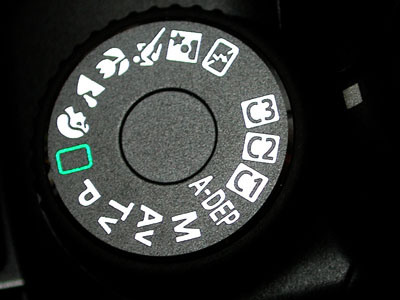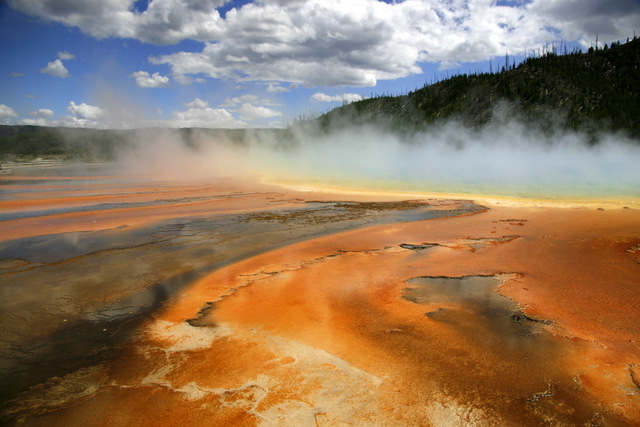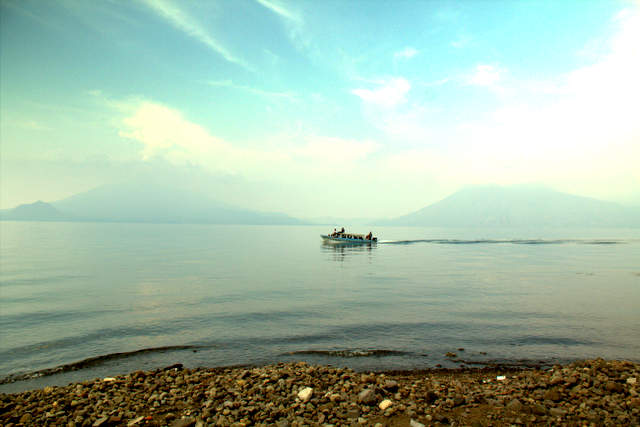Digital Photography Technique
AUTO MODE
By Scott Umstattd

Go Green! Auto Mode May Take Your Best Shot
Are you spending more time thinking about your camera than using it? Are you just getting started with photography? Are you considering your settings when you should be configuring your composition?
There are an endless variety of digital photography techniques to consider when taking pictures. And, if you’re not careful, you may find yourself asking questions about your camera at a time when you should be taking pictures with your camera. This goes for beginners and pros alike.
As you develop your technical skills and learn to master the manual controls of your camera, consider this: composition is more important than camera settings.
Your camera cannot control composition. That is all you - all the time. But, your camera can do a pretty good job of finding a sufficient, if not ideal, juxtaposition of ISO, shutter and aperture. You lose control of how the camera is set, but what you gain is probably even more important.
Your camera can read light coming through your lens and can make a very well-informed decision on what settings to use that will create an even and balanced picture. And it will, in all likelihood give you an image that you can use.
But if you are trying to emphasize (or de-emphasize) an area of your picture you may find that, while shooting in full-auto works, it will not give you the results you are looking for every time.
Photo taken with a Canon 30D and a Canon 15-85mm f/3.5-5.6 USM IS lens.
Many enthusiasts and professionals use the auto feature when the lighting is bad (lots of shadows, different colored lights, strong light sources).
If a UFO shows itself over the horizon and you pull your camera out of the bag but you have no idea how the camera is set (ISO?, shutter?, f-stop?), put the camera on auto and start shooting.
It is more important to capture the footage of the UFO than it is to shoot the most beautiful footage ever of a UFO. (Although, shooting the most beautiful footage ever of a UFO is high on my list of things to do as a photographer).
There are many digital photography techniques you can apply to control the light coming in to your camera and there are many automatic settings that take your need to think right out of the picture. In the end, what matters most is; did you get the picture of the UFO?
How your camera captures the picture is not nearly as important as where you are, how you compose the picture and when you press the shutter.
How you frame that must-get shot is all you. Whether or not you get that must-get shot is entirely up to you.
When you shoot in auto-mode you can put all of your focus on composition, placement, timing and actually taking pictures.
Placement of the camera within the world is entirely your responsibility.
Your camera doesn’t recognize the scene in front of it. And your camera cannot go to the zoo on its own (not yet anyway). And your camera will not recognize a UFO should your camera ever come across one on its own.
For the time being, your camera can’t get to the mountains and your camera has no clue if the mountains in the background would look better on the lower-third or upper-third of the frame. But you do.
You know how to make the mountains in the background best accent the boat in the foreground. You recognized there was a boat in the foreground! You know where you are and you know what you want.
Photo taken with a Canon 60D and a Canon 15-85mm f/3.6-5.6 USM IS lens.
You have to be somewhere.
You have to frame your surroundings.
And you have to press the shutter.
Even though you are going to lose creative control when you use full-auto, you will have a second chance to make your pictures more powerful. Today’s digital cameras come with a lot of high quality pixels and if you shoot in Raw mode you will have even more editing options.
With editing software like Adobe Photoshop Lightroom, Picasa and PicMonkey you can easily take your (sometimes plain looking) full-auto pictures and turn them into powerful pictures that will demand attention.
A great (and the easiest to learn) digital photography technique is knowing when to use your camera’s full-auto mode to take pictures. Using auto-mode removes any worry about using the right settings and it lets you stay focused on where and how you point your camera and when you press the shutter. Use photo-editing software to add some punch to your pictures if the auto feature photos look a little pale and flat.
Here's a quick video from Brent Mail that explains how simple movements on your part can affect your picture's composition.
related Articles You May Enjoy
- 7 Low Light Photography Tips
- Shooting Video With Your DSLR
- What's In My Camera Bag?
- 10 Excellent Photography Tutorials
More from picture power
photography lesson plans pack
Return Home from Digital Photography Technique Auto Mode














